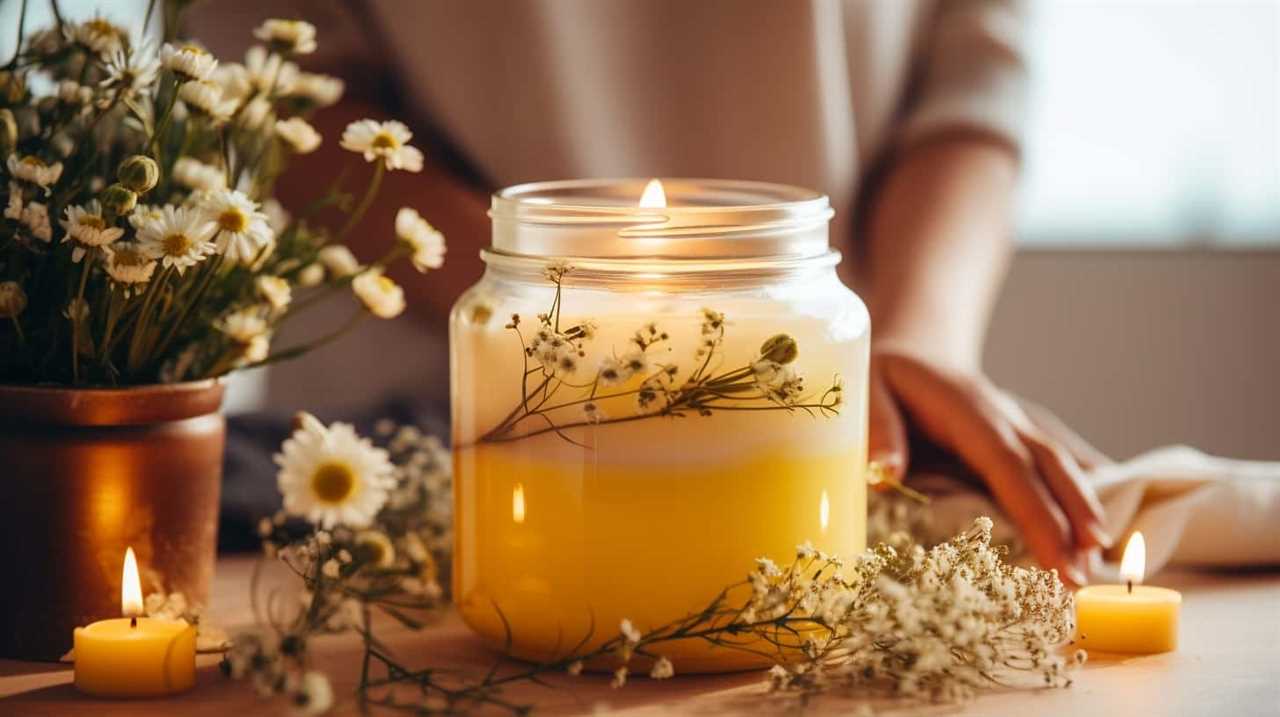Are you frustrated with the uneven burning of your 3-wick candles, which leaves unsightly holes and wastes precious wax? Don’t worry, we have the solution for you! This guide will show you foolproof techniques to guarantee a smooth burn for your 3-wick candle, just like a pro.
No more wasted wax or frustratingly lopsided burns. We’ll teach you the secrets of trimming the wicks to the perfect length, positioning the candle in a draft-free area, using a candle snuffer like a pro, rotating the candle regularly, and avoiding those marathon burn sessions.
Plus, we’ll even show you how to properly store your candle when it’s not in use.
Get ready to achieve candle burning mastery and enjoy perfectly even burns every time!
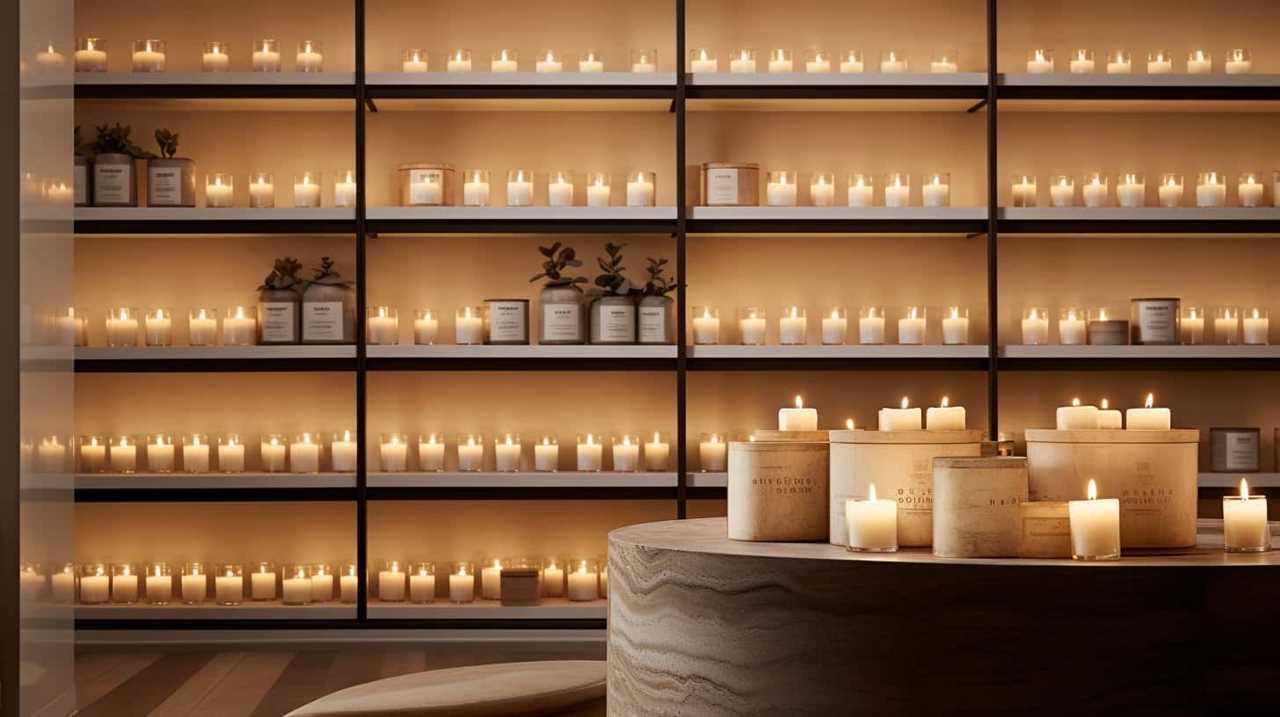
Key Takeaways
- Trimming the wicks to the right length ensures an even burn.
- Positioning the candle in a draft-free area is crucial for even burning.
- Using a candle snuffer prevents hot wax splattering and reduces uneven melting.
- Achieving even heat distribution by positioning the candle in a draft-free area prevents tunneling and maximizes burn time.
Trim the Wicks to the Right Length
To ensure an even burn, we trim the wicks of our 3 wick candles to the appropriate length. Candle wick maintenance is crucial for preventing wick mushrooming, which can lead to an uneven burn and excessive soot.
When a wick is too long, it can cause the flame to become too large and produce more heat than necessary. This can result in the candle burning too quickly and unevenly. On the other hand, if the wick is too short, it may not be able to draw up enough wax to fuel the flame, causing it to extinguish prematurely.
By trimming the wicks to the right length, we ensure a controlled flame that burns evenly and optimizes the lifespan of our candles.
Now that we’ve our wicks trimmed, let’s move on to the next step: positioning the candle in a draft-free area.
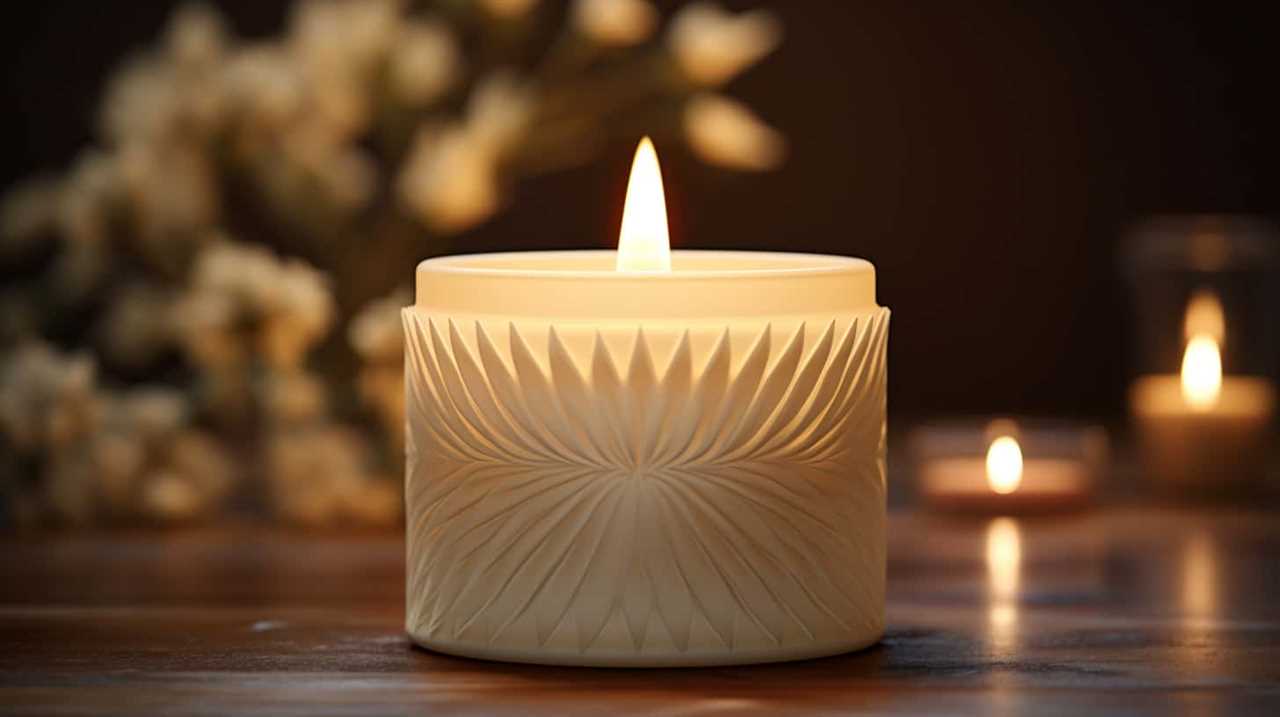
Position the Candle in a Draft-Free Area
When it comes to making a 3 wick candle burn evenly, one of the most important factors is positioning it in a draft-free area. Eliminating air currents is crucial in achieving an even heat distribution, allowing the candle to burn uniformly from all three wicks.
Optimal placement can make a significant difference in how well the candle burns and how long it lasts, so it’s worth taking the time to find the perfect spot in your home.
Eliminate Air Currents
We position the candle in a draft-free area to eliminate air currents and ensure even burning. Preventing flickering and maintaining a steady flame are crucial for achieving an evenly burning 3 wick candle.
Air currents can disrupt the balance of the flame, causing it to flicker and burn unevenly. By placing the candle in a draft-free area, such as away from open windows or vents, we can minimize the impact of air currents on the flame. This allows the candle to burn steadily and evenly, providing a consistent fragrance and maximizing its burn time.

Optimal placement is crucial in creating a harmonious environment for the candle to burn, resulting in a more enjoyable and longer-lasting experience.
Optimal Placement Is Crucial
For optimal placement of a 3 wick candle, it’s essential to position it in a draft-free area. Air currents can disrupt the flame and cause uneven burning, leading to wasted wax and an unsightly appearance.
To achieve the best results, consider the following factors when choosing the right location for your candle.
First, ensure that the area is free from any drafts, such as open windows or vents. Even a slight breeze can affect the flame and lead to an uneven burn.
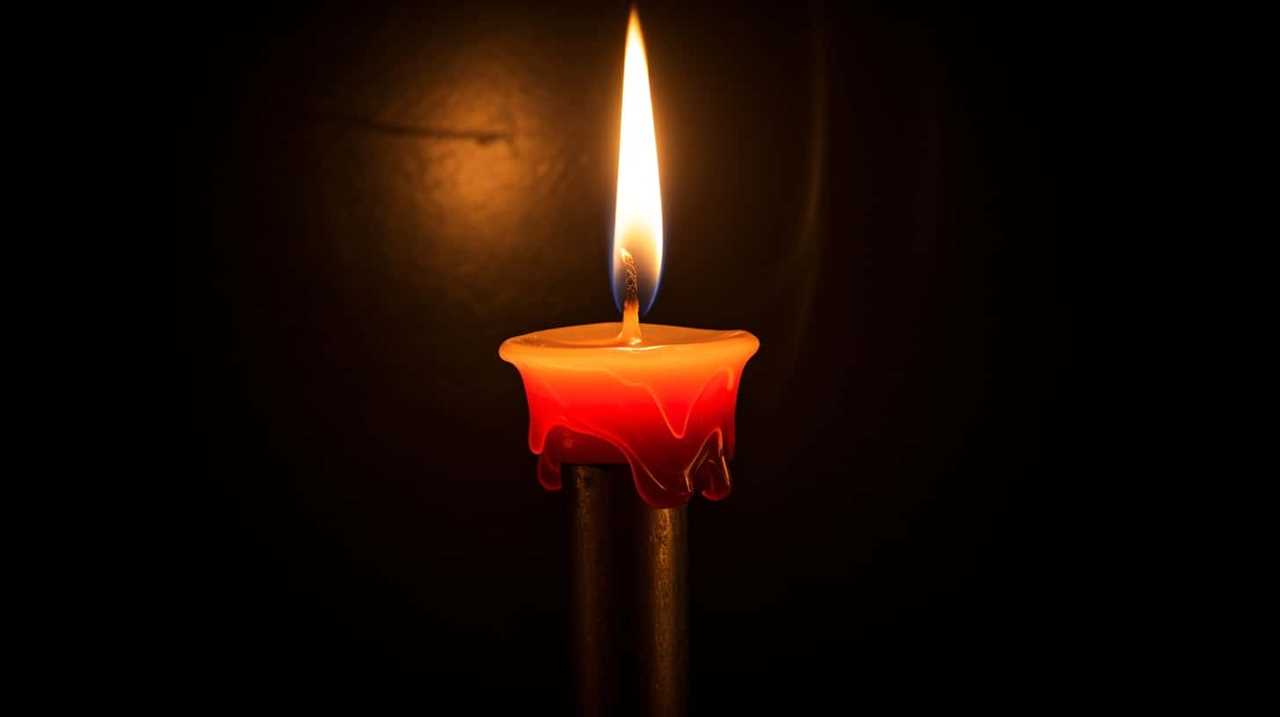
Additionally, be mindful of nearby objects that could obstruct the candle’s light. Placing the candle on a stable, heat-resistant surface away from curtains, furniture, or decorations will ensure optimal lighting techniques and reduce the risk of accidents.
Achieving Even Heat Distribution
To ensure even heat distribution, it is crucial to position the 3 wick candle in a draft-free area where air currents will not disrupt the flame and cause uneven burning. Maximizing burn time and preventing tunneling can be achieved by creating a stable environment for the candle to burn. Placing the candle in a draft-free area ensures that the flame remains steady and consistent, allowing for an even distribution of heat across all three wicks. This helps to prevent tunneling, where the candle burns down the center, leaving a ring of unused wax around the edges. To emphasize the importance of positioning the candle in a draft-free area, consider the following table:
| Positioning the Candle in a Draft-Free Area | Benefits |
|---|---|
| Ensures even heat distribution | Maximizes burn time and prevents tunneling |
| Creates a stable environment for the flame | Allows all three wicks to burn evenly |
Use a Candle Snuffer Instead of Blowing Out the Flames
When it comes to extinguishing the flames of a 3 wick candle, using a candle snuffer instead of blowing them out can bring several benefits.
Firstly, a candle snuffer helps prevent hot wax from splattering and causing a mess.
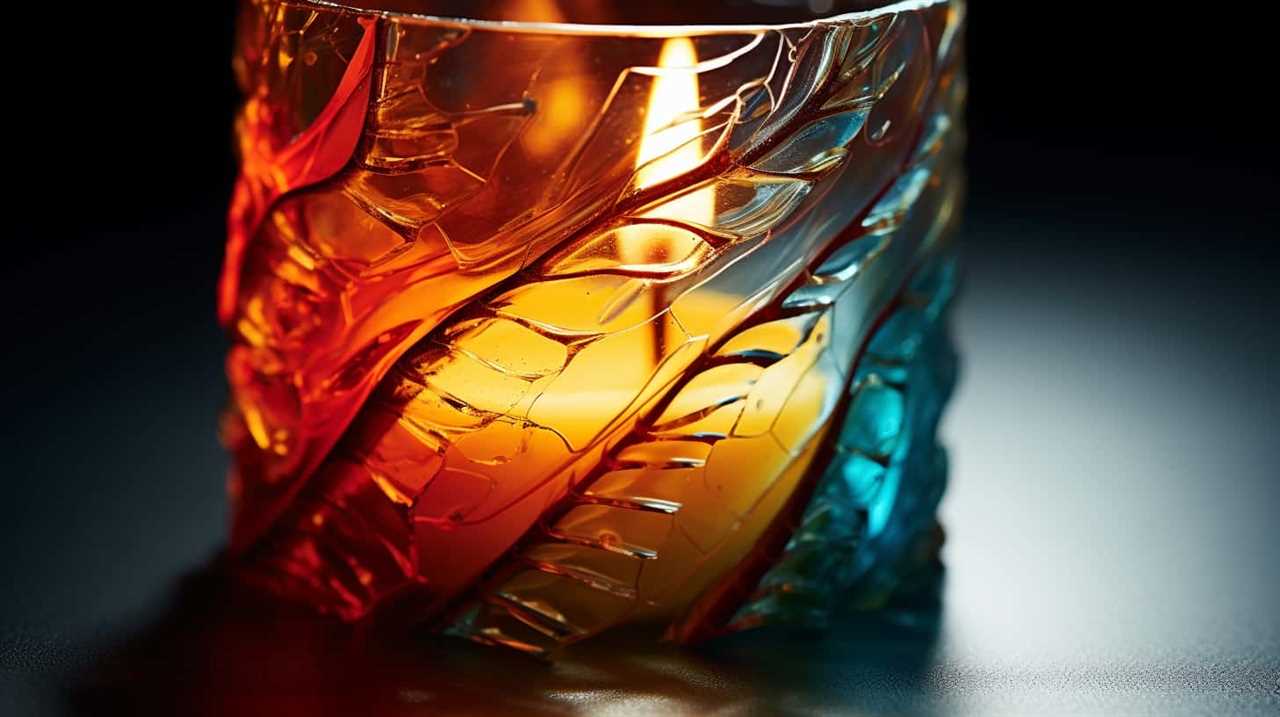
Secondly, it allows for a more even burning experience by minimizing the disturbance to the wicks and reducing the chances of uneven melting.
Candle Snuffer Benefits
Our preferred method for extinguishing the flames of a 3 wick candle is by using a candle snuffer instead of blowing them out. Not only does using a candle snuffer provide a more controlled and gentle way of putting out the flames, but it also offers several benefits over other alternatives.
Here are four reasons why using a candle snuffer is beneficial:
- Minimizes wax splatter: When you blow out a candle, the force of the air can cause hot wax to splatter, potentially creating a mess. Using a snuffer avoids this issue altogether.
- Prevents smoke and soot: Blowing out a candle can create smoke and soot, which can stain walls, ceilings, and furniture. A snuffer eliminates this problem, ensuring a clean burn.
- Preserves the wick: Blowing out a candle can cause the wick to bend or fray, making it difficult to relight. A snuffer gently extinguishes the flame, helping to maintain the integrity of the wick.
- Enhances safety: Using a snuffer reduces the risk of accidental fires caused by blowing out a candle too forcefully or leaving a smoldering wick unattended.
Even Burning Advantages
We frequently use a candle snuffer to extinguish the flames instead of blowing them out, as it offers numerous advantages for achieving even burning.

When you blow out a candle, the sudden gust of air can cause the wax to splatter and create uneven burning. However, using a candle snuffer allows you to gently and precisely extinguish the flames without disturbing the wax or wicks.
This helps maintain a consistent burn throughout the entire candle, ensuring that all three wicks are utilized evenly. To achieve an even burn, make sure to trim the wicks to about ¼ inch before lighting the candle.
Additionally, keep the candle away from drafts and make sure to burn it for at least 3 hours on the first use to create a proper wax pool.
Rotate the Candle Regularly While Burning
To ensure an even burn, regularly rotate the 3 wick candle while it’s lit. Rotating the candle clockwise helps distribute the heat and wax evenly, preventing tunneling and prolonging the candle’s lifespan.

Here are four steps to follow when rotating your candle:
- Wait for the wax pool to cool slightly before rotating. This ensures that the wax isn’t too hot and reduces the risk of accidental spills or burns.
- Gently extinguish the flames by using a candle snuffer or carefully blowing them out. Safety is paramount when handling lit candles.
- Once the flames are out, use a heat-resistant glove or cloth to hold the candle jar. Slowly rotate the entire jar in a clockwise direction, ensuring that all three wicks receive equal exposure.
- Place the candle back on a heat-resistant surface and relight the wicks. Repeat the rotation process every few hours to promote an even burn.
Avoid Burning the Candle for Too Long at Once
One key tip is to limit the duration of each burning session for a 3 wick candle. While it may be tempting to let the candle burn for hours on end, this can actually decrease its overall burn time and lead to tunneling. Tunneling occurs when the candle burns down the middle, leaving a thick layer of wax around the edges. To prevent tunneling and maximize burn time, it is recommended to burn the candle for no more than 3-4 hours at a time. This allows the wax to melt evenly across all three wicks and prevents the formation of a tunnel. To keep track of your burning sessions, you can use the following table:
| Burning Session | Duration |
|---|---|
| Session 1 | 3 hours |
| Session 2 | 4 hours |
| Session 3 | 3 hours |
| Session 4 | 4 hours |
| Session 5 | 3 hours |
Store the Candle Properly When Not in Use
When storing a 3 wick candle that isn’t in use, it’s important to properly store it to maintain its quality and maximize its burn time. Here are four tips for proper storage and preventing wax melting:
- Keep the candle in a cool and dry place: Avoid storing the candle in direct sunlight or near a heat source, as this can cause the wax to melt and affect the quality of the candle.
- Use a candle lid or cover: If your 3 wick candle came with a lid or cover, make sure to use it when storing the candle. This will help protect the wax from dust, debris, and potential melting.
- Wrap the candle in tissue paper: For added protection, wrap the candle in tissue paper before storing it. This will help prevent any accidental bumps or scratches that could damage the candle.
- Store the candle upright: To ensure even burning and prevent any deformation, store the candle in an upright position. This will help maintain the shape of the candle and allow for a consistent burn.
Properly storing your 3 wick candle when not in use is essential for preserving its quality and maximizing its burn time. By following these tips, you can enjoy the full potential of your candle and create a warm and inviting atmosphere in your space.
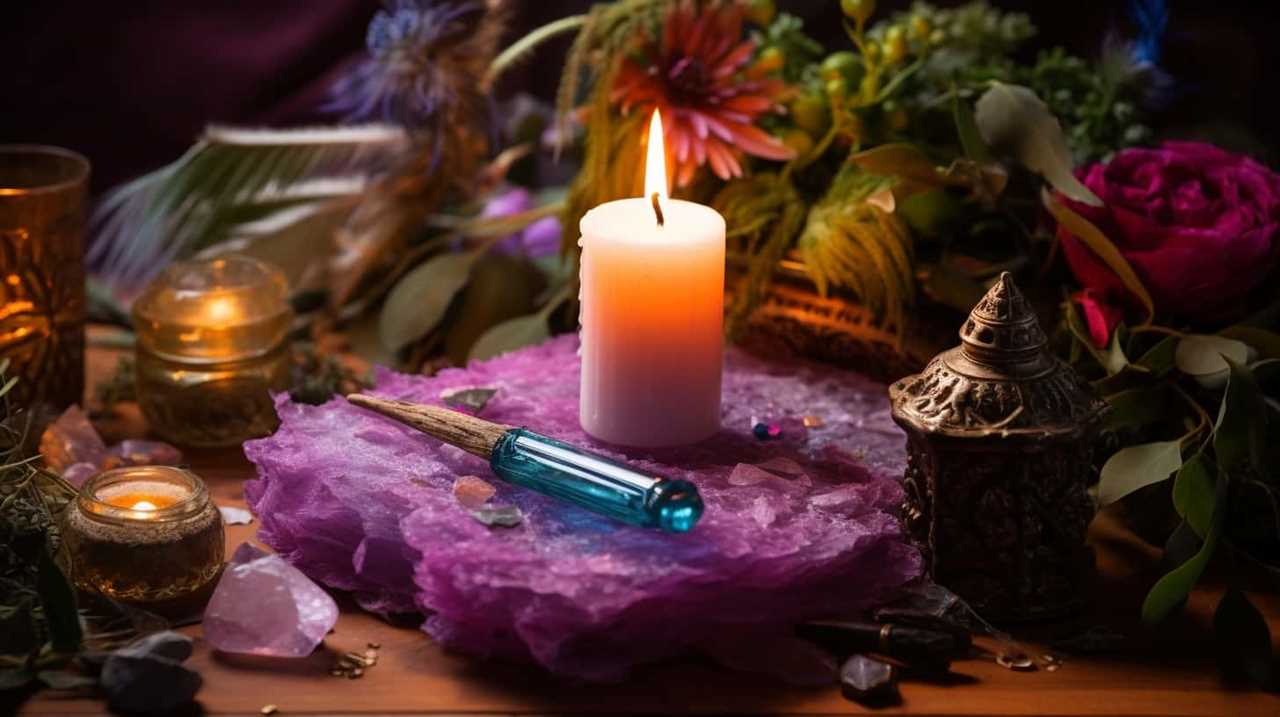
Frequently Asked Questions
How Often Should I Trim the Wicks of My 3 Wick Candle?
We usually trim the wicks of our 3 wick candles every 3-4 hours to prevent tunneling. It helps the candle burn evenly and prevents excessive smoke. Regularly trimming the wicks ensures a longer-lasting and cleaner burning experience.
Can I Use a Regular Lighter to Light the Candle or Do I Need a Specific Type of Lighter?
Can we just use a regular lighter or do we need a special one for our 3 wick candles? What about matches? We’ve found that a regular lighter works just fine, but matches can also be used for a more traditional touch.
Is It Necessary to Rotate the Candle While Burning or Can I Just Leave It in One Position?
Rotating the candle while burning is recommended to ensure an even burn. This helps distribute the heat and prevents tunneling. Leaving it in one position may cause uneven melting and waste of wax.
How Long Should I Wait Before Relighting the Candle After Extinguishing It With a Snuffer?
We wait a brief moment before relighting the candle, giving it time to cool down. Snuffers provide a gentle and precise way to extinguish the flame, ensuring minimal smoke and allowing for a more enjoyable experience.
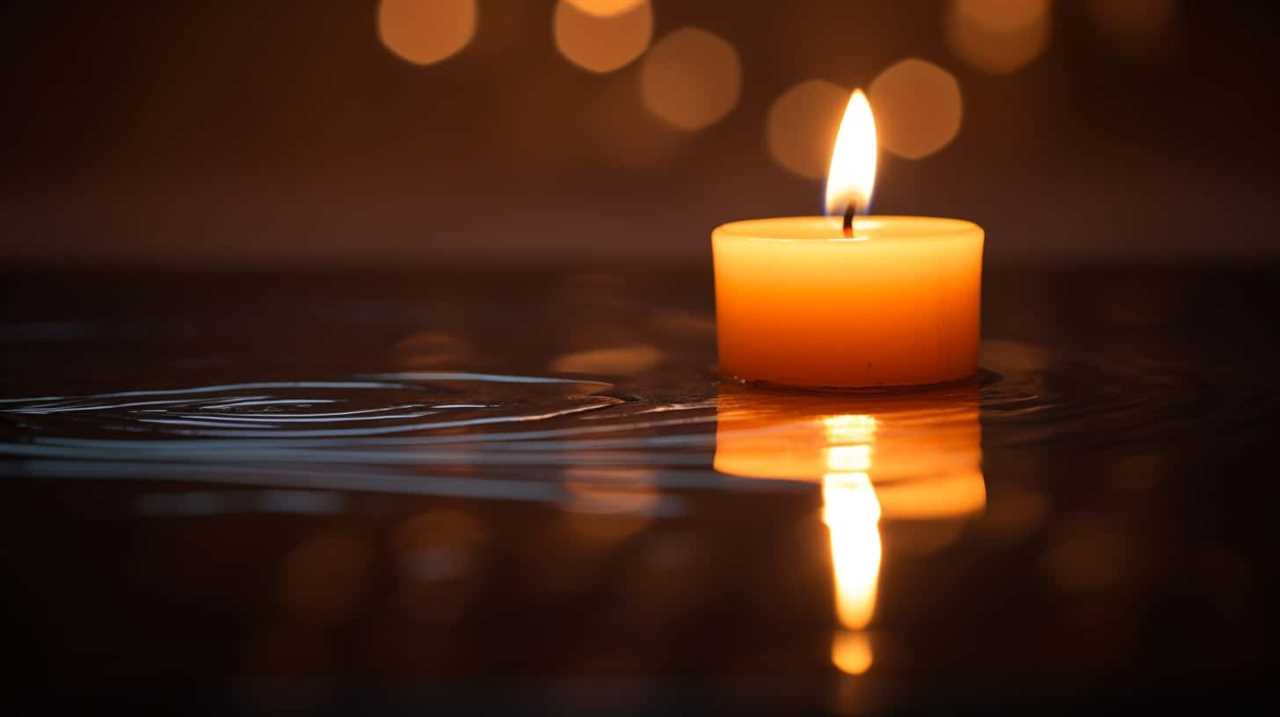
What Is the Best Way to Store My 3 Wick Candle When I’m Not Using It?
When storing our 3 wick candles, proper technique is crucial to prevent wick soot buildup. We’ve found that keeping them in a cool, dry place, away from direct sunlight, ensures their longevity and even burning.
Conclusion
So there you have it, our little guide on how to make a 3 wick candle burn evenly. Who’d have thought that such a small object could require so much care and attention? But trust us, it’s worth it.
By following these simple steps, you’ll be able to enjoy the warm, flickering glow of your candle for much longer. Just remember, a little TLC goes a long way in the world of candle burning.
Happy burning, folks!












